
Page i
The Many Faces of Strategic Voting
Strategic voting is classically defined as voting for ones second preferred option to prevent ones least preferred option from winning when ones first preference has no chance. Voters want their votes to be effective, and casting a ballot that will have no influence on an election is undesirable. Thus, some voters cast strategic ballots when they decide that doing so is useful.
This edited volume includes case studies of strategic voting behavior in Israel, Germany, Japan, Belgium, Spain, Switzerland, Canada, and the United Kingdom, providing a conceptual framework for understanding strategic voting behavior in all types of electoral systems. The classic definition explicitly considers strategic voting in a single race with at least three candidates and a single winner. This situation is more common in electoral systems that have single-member districts that employ plurality or majoritarian electoral rules and have multiparty systems. Indeed, much of the literature on strategic voting to date has considered elections in Canada and the United Kingdom. This book contributes to a more general understanding of strategic voting behavior by taking into account a wide variety of institutional contexts, such as single transferable vote rules, proportional representation, two-round elections, and mixed electoral systems.
Laura B. Stephenson is Professor of Political Science at the University of Western Ontario.
John Aldrich is Pfizer-Pratt University Professor of Political Science at Duke University.
Andr Blais is Professor of Political Science at the Universit de Montral.
Page ii Page iii
The Many Faces of Strategic Voting
Tactical Behavior in Electoral Systems Around the World
Edited by Laura B. Stephenson, John H. Aldrich, and Andr Blais
University of Michigan Press
Ann Arbor
Page iv
Copyright 2018 by Laura B. Stephenson, John H. Aldrich, and Andr Blais
All rights reserved
This book may not be reproduced, in whole or in part, including illustrations, in any form (beyond that copying permitted by Sections 107 and 108 of the U.S. Copyright Law and except by reviewers for the public press), without written permission from the publisher.
Published in the United States of America by the
University of Michigan Press
Manufactured in the United States of America
First published November 2018
A CIP catalog record for this book is available from the British Library.
Library of Congress Cataloging-in-Publication data has been applied for.
ISBN 978-0-472-13102-0 (hardcover : alk. paper)
ISBN 978-0-472-12430-5 (e-book)
Cover illustration courtesy of Pexels.
Page v
Contents
- John H. Aldrich, Andr Blais, and Laura B. Stephenson
- Paul R. Abramson, John H. Aldrich, Abraham Diskin, Aaron M. Houck, Renan Levine, Thomas J. Scotto, and David B. Sparks
- Ignacio Lago
- Jean-Franois Daoust
- Andr Blais, Peter Loewen, Daniel Rubenson, Laura B. Stephenson, and Elisabeth Gidengil
- Carolina Plescia
- Tom Verth and Stefanie Beyens Page vi
- Philipp Harfst, Andr Blais, and Damien Bol
- Karine Van der Straeten, Romain Lachat, and Jean-Franois Laslier
- Isabelle Lebon, Antoinette Baujard, Frdric Gavrel, Herrade Igersheim, and Jean-Franois Laslier
Page vii
Many components of this volume emerged from the Making Electoral Democracy Work project, which was supported by a grant from the Social Sciences and Humanities Research Council of Canada. SSHRCs generous support brought together a diverse group of researchers interested in the intersections of voting behavior, party strategy, and electoral systems and made it possible to gather considerable data that have contributed to an improved understanding of electoral democracy around the world.
This volume is dedicated to the special people in our lives who support us in all we do and to the voters around the world who keep us guessing about their motivations.
Page viii Page 1
Strategic Voting and Political Institutions
John H. Aldrich, Andr Blais, and Laura B. Stephenson
In 1999, Israel held an early election. For only the second (and last) time, citizens cast two votes. Subsequent studies showed that one important factor in citizens decisions was their perception that Mordechai was increasingly likely to lose and that their votes were better spent in support of Barak, whom they preferred to Netanyahu and who, unlike Mordechai, could win (Abramson et al. 2004).
Such decisions by voters are referred to as strategic voting, because the choices they make reflect the strategic setting of the campaign. Typically, the idea is to avoid wasting a vote on a candidate or party whom the voter likes but who cannot win by giving it instead to a candidate or party whom the voter finds less attractive but who may well win, thereby defeating Page 2 an option the voter likes even less. Thus, some voters who disliked Netanyahu considered voting for Mordechai, their most preferred choice, or Barak, their second choice. In this instance, Mordechai lost support right at the end of the campaign as the strategic setting evolved such that those who especially disliked Netanyahu settled on Barak. As it became clear that Mordechai could not win but that Barak might, even more voters changed from Mordechai to Barak to avoid wasting votes. Those who reasoned in this fashion are said to have voted strategically. Had Mordechai stayed in the running, many others would undoubtedly have continued to vote for him in spite of the strategic setting. Such voters are referred to as sincere voters, voting for whom they prefer regardless of the strategic context. Sincere and strategic voting have similarities (they are both based on preferences, or utilities) but they also differ (since only strategic voters form expectations about likely outcomes and act upon those expectations). Those expectations combine with their preferences regarding the various outcomes to form expected utilitiesto determine for which party these voters cast their ballots. Sincere voters, by contrast, act on their preferences but do not consider expectations in determining their actions.
The chapters in this book study the question of the existence, extent, and conditions under which voters reason strategically and thus engage in strategic voting in a wide variety of institutional settings and in elections in different strategic contexts. This variation provides the opportunity to test several theoretical propositions about voters and their inclination to engage in strategic reasoning. By examining voters in these different institutional and electoral contexts, we not only learn about how voters reason and thus about their role in democratic politics but also explain more fully voting decisions and outcomes in many different elections.
Each of the chapters involves original data, often survey-based but including laboratory and survey-embedded experiments. While sources vary, more than half the chapters draw their data from the Making Electoral Democracy Work (MEDW) project led by Andr Blais (2010). This project includes detailed analyses of party strategies, voting behavior, and laboratory experiments. According to the projects website (www.chairelectoral.com/medw.html),
The goal of the MEDW project is to examine how the rules of the game (especially the electoral system) and the electoral context (especially the competitiveness and salience of the election) influence the dynamic and reciprocal relationship between voters and parties.
Next page
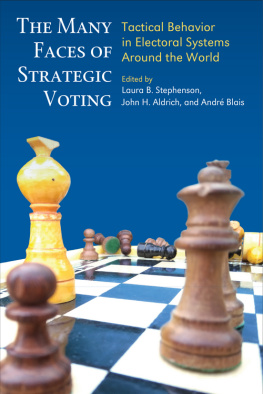

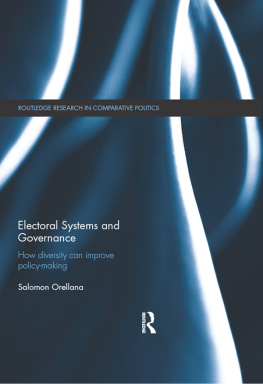

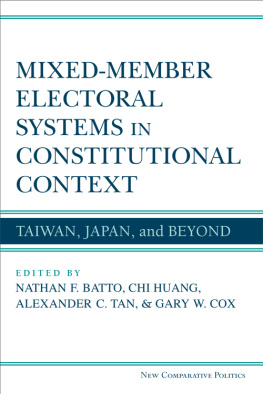
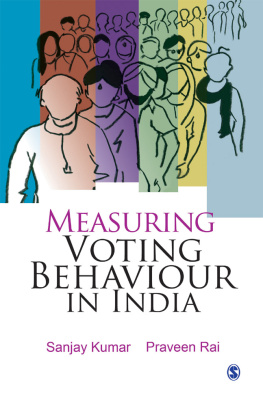
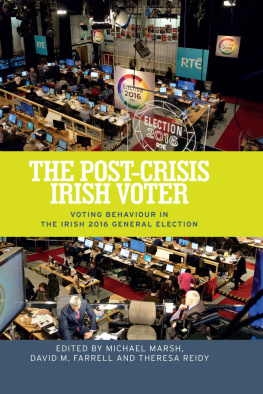

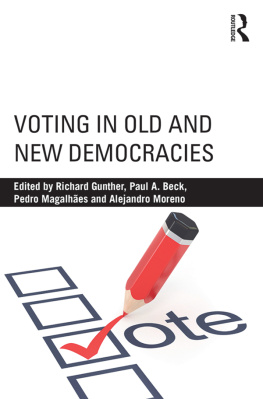
 Page i
Page i